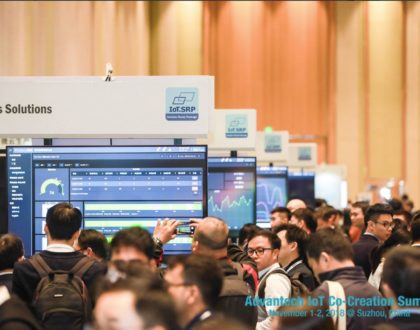Feels Like the IoT Conversation is Finally Changing
by Tim Taberner

I’ve been presenting at a lot of events over the past few weeks. This is nothing new, I’ve been speaking on IoT related matters for many years now, but finally it feels like the industry is coming round to injecting a bit of reality in place of the hype.
Those of you who know me will know that I’ve been involved with IoT right from the days when Arlen Nipper and Andy Stanford Clark were developing MQTT to address customer needs we were finding at Arcom in our protocol translation business. Ever since that time, I’ve been a convert to the principle of separating data producers from data consumers and having enriched, contextualised data passing between them in order to provide the semantic search capability at the heart of IoT architectures, and been evangelising about the way it can be applied to solve existing business problems more quickly and with less risk, with the added benefit of future proofing and protection of investment.
Sadly, as the hype over IoT has overtaken the industry it has felt like IoT has been seen as an end in itself, rather than a technology that should be applied to address a business need. It has long been one of the standard jokes at conferences that the answer to the question ‘who is making money out of the internet of things’ is ‘organisations that put on conferences and seminars about it’. It is certainly true that the IoT brings new challenges, but these are less to do with the technology. After all it’s something like 16 years ago that we were deploying the first MQTT systems into the oil & gas industry.
Rather, the biggest challenges appear to me to be around the business models needed to allow the market to develop. If a user wants to deploy an ‘old’ M2M system, then this is fairly straightforward – find a company that is focused on the niche requirement to be addressed and buy one of their systems. IoT isn’t like that – almost by definition it is the melding of a number of horizontal technology layers, meaning that the provision of an IoT system involves input from a number of companies, not a single point in time niche specialist.
Our business models however haven’t caught up with this yet. B+B has and remains very proactive in building a partner ecosystem, where we co-operate with companies offering complimentary technologies which allow end users to build the flexible systems they want, but where we don’t confuse each other with customers or sales channels. Our partners work with us to verify the interoperability of our solutions, and we have grown up discussions about the areas of overlap that inevitably exist so that when any of us are talking to an end user about a particular application, we can bring qualified partners into the conversation to ensure that the end users requirements are met
It’s been refreshing therefore, in the events I’ve been at recently, that the industry is finally coming around to realising that CEOs and CFOs in our client organisations don’t wake up in the middle of the night thinking ‘what my company needs is some IoT’, and that we need to bring the conversation back to how we use the technology available from the IoT to solve their current business problems whilst also offering the flexibility to also address future, as yet unidentified, needs. It’s taken a long time, and there is still way too much hype around it, but finally companies are realising that however bright and shiny a new technology may be, it still has to be justified in terms of ROI and lifetime cost of ownership – on what it can deliver today, not what will be ‘jam tomorrow’.
Recommended Posts

Co-Creation, Paving the Way to a More Connected Future
November 27, 2018

The Benefits of a ‘Do It For Me’ Mentality in the IIoT
October 5, 2018

Why You Need to ‘Mind the Gap’ in Manufacturing Technology
August 31, 2018
